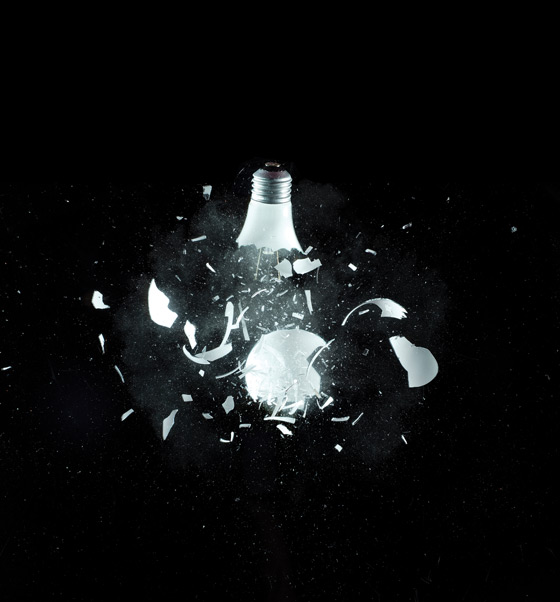One of the best ways to prepare for death is to acknowledge that we really are going to die. We’re falling in the dark and have no idea when we’ll hit the ground. Buddhist scholar Anne Klein says, “Life is a party on death row. Recognizing mortality means we are willing to see what is true. Seeing what is true is grounding. It brings us into the present. . . .” We all know that we’re going to die, but we don’t know it in our guts. If we did, we would practice as if our hair were on fire. One way to swallow the bitter truth of mortality and impermanence—and get it into our guts—is to chew on the four reminders.
The four reminders, or the four thoughts that turn the mind, are an important preparation for death because they turn the mind from constantly looking outward to finally looking within. These reminders, also called the four reversals, were composed by Padmasambhava, the master who brought Buddhism from India to Tibet. They can be viewed as representing the trips Prince Siddhartha took outside his palace that eventually transformed him into the Buddha. During these trips, Siddhartha encountered old age, sickness, and death, and developed the renunciation that turned his mind away from the distractions and deceptions of the outer world and in toward silence and truth.
As a meditation instructor, I often prescribe the four reminders as the best remedy to get students who have stalled on the path back on track. As with mindfulness itself, the four reminders provide another way to work with distraction. They bring the key instruction from The Tibetan Book of the Dead—“do not be distracted”—to a more comprehensive level. The four reminders show us that it’s not just momentary distraction that’s problematic but distraction at the level of an entire life. If we’re not reminded, we can waste our whole life.
The Tibetan Buddhist teacher Chögyam Trungpa Rinpoche presented them this way:
FIRST Contemplate the preciousness of being so free and well favored. This is difficult to gain and easy to lose. Now I must do something meaningful.
SECOND The whole world and its inhabitants are impermanent. In particular, the life of beings is like a bubble. Death comes without warning; this body will be a corpse. At that time the dharma will be my only help. I must practice it with exertion.
THIRD When death comes, I will be helpless. Because I create karma, I must abandon evil deeds and always devote myself to virtuous actions. Thinking this, every day I will examine myself.
FOURTH The homes, friends, wealth, and comforts of samsara are the constant torment of the three sufferings, just like a feast before the executioner leads you to your death. I must cut desire and attachment, and attain enlightenment through exertion.
How long should we contemplate these reminders? Until our mind turns. Until we give up hope for samsara (the worldly cycle of birth and death), and realize the folly of finding happiness outside.
Most of us spend our lives looking out at the world, chasing after thoughts and things. We’re distracted by all kinds of objects and rarely look into the mind that is the ultimate source of these objects. If we turn our mind and look in the right direction, however, we will find our way to a good life—and a good death. Instead of being carried along with the external constructs of mind, we finally examine the internal blueprints of mind itself.
It’s often said that the preliminaries are more important than the main practice. The significance of these four reminders, as a preliminary practice, cannot be overstated. Chökyi Nyima Rinpoche said that if we could truly take them to heart, 50 percent of the path to enlightenment would be complete. These contemplations develop revulsion to conditioned appearances, point out their utter futility, and cause awareness to prefer itself rather than outwardly appearing objects. They turn the mind away from substitute gratifications and direct it toward authentic gratification—which can only be found within.
The four thoughts remind us of the preciousness of this human life; that we are going to die; that karma follows us everywhere; and that samsara is a waste of time that only perpetuates suffering. Memorize them. They will reframe your life, focus your mind, and advise you in everything you do. As Dr. Samuel Johnson, the author of the first English dictionary, said: “When a man knows he is to be hanged in a fortnight, it concentrates his mind wonderfully.”
What would you do if you had six months to live? What would you cut out of your life? What would you do if you had one month, one week, one day? The Indian master Atisha said, “If you do not contemplate death in the morning, the morning is wasted. If you do not contemplate death in the afternoon, the afternoon is wasted. If you do not contemplate death in the evening, the evening is wasted.” The four reminders remove the waste.
We see others dying all around us but somehow feel entitled to an exemption. In the Hindu epic Mahabharata, the sage Yudhishthira is asked, “Of all things in life, what is the most amazing?” He answers, “That a man, seeing others die all around him, never thinks he will die.” If we acknowledge death and use it an advisor, however, it will prioritize our life, ignite our renunciation, and spur our meditation. The Buddha said: “Of all footprints, that of the elephant is the deepest and most supreme. Of all contemplations, that of impermanence is the deepest and most supreme.”

Bring these supreme reminders into your life and realize that life is like a candle flame in the wind. Visualize friends and family and think, “Uncle Joe is going to die, my sister Sarah is going to die, my friend Bill is going to die, I am going to die.” Put pictures of dead loved ones on your desk or shrine; put sticky notes with the word “death” or “I am going to die” inside drawers or cabinets to remind you; read an obituary every day; go to nursing homes, cemeteries, and funerals. The essence of spiritual practice is remembrance, whether it’s remembering to come back to the present moment or recalling the truth of impermanence. Do whatever it takes to realize that time is running out and you really could die today. You are literally one breath away from death. Breathe out, don’t breathe in, and you’re dead.
One of the marks of an advanced student is that he or she finally realizes that today could be the day. Realizing impermanence is what makes them advance. For most of us, however, as Paul Simon sang, “I’ll continue to continue to pretend / My life will never end. . . .” We essentially spend our lives moving deck chairs around on the Titanic. No matter how we position ourselves—no matter how comfortable we try to get—it’s all going down.
These teachings exhort us not to spend our lives, which most of us do—literally and figuratively. Reinvest. Take the precious opportunity that has been given to you, and do not waste your life. The four thoughts that turn the mind turn it from reckless spending to wise investing. We spend so much effort investing in our future. We invest in IRAs, 401(k)s, pension plans, and retirement portfolios. Spiritual advisors exhort us to invest in our much more important bardo (post-death) retirement plan. That’s our real future.
Don’t worry so much about social security. Finance your karmic security instead. Invest in your future lives now. Investing so much in this life is like checking into a hotel for a few days and redecorating the room: what’s the point? B. Alan Wallace says, “In light of death, our mundane desires are seen for what they are. If our desires for wealth, luxury, good food, praise, reputation, affection, and acceptance by other people, and so forth are worth nothing in the face of death, then that is precisely their ultimate value.”
On a personal note, understanding impermanence has been the greatest gift in my study and practice of the teachings on death. I’m thickheaded, but I finally get it: I am going to die—and it could be today. My life has been completely restructured because I now believe it. The rugged truth of impermanence has simplified my life, shown me what is important, and inspired me to really practice. Sogyal Rinpoche says in The Tibetan Book of Living and Dying:
Ask yourself these two questions: Do I remember at every moment that I am dying, and that everyone and everything else is, and so treat all beings at all times with compassion? Has my understanding of death and impermanence become so keen and so urgent that I am devoting every second to the pursuit of enlightenment? If you can answer “yes” to both of these, then you really understand impermanence.
These reminders may seem like a morbid preoccupation with death, but that is only because of our extreme aversion to dying. For most of us, death is the final defeat. As Jack LaLanne, the fitness and diet guru, once said, “I can’t afford to die. It would wreck my image.” We live in denial of death, and suffer in direct proportion to this denial when death occurs. The four reminders remind us of the uncompromising truth of reality, and prepare us to face it.
The four reminders, joined with mindfulness meditation, instill a strength of mind that benefits both self and other. Sakyong Mipham Rinpoche says,
The strength of shamatha [mindfulness meditation] is that our mind is slow enough and stable enough to bring in the reality, to really see it. Then when someone we know is dying, we aren’t so shaken up. We may be sad, in the sense of feeling compassion, but we have thoroughly incorporated the notion of death to the point that it has profoundly affected our life. That is known as strength of mind.
That stability naturally radiates to stabilize the mind of the dying person, which helps them when everything is being blown away.
Dying people are sometimes jealous of those still alive. “Why do I have to die when everyone else keeps on living? It’s so unfair. Why me?” At that point they need to remember that those left behind are not returning to a party that lasts till infinity. Those left behind are returning to a challenging life that is filled with endless dissatisfaction and suffering. As you are dying, remember that it’s just a matter of time before everyone else joins you, just as you are about to join the billions of others who have already left this life for another one. Those left behind are a minority. No one is going to get out of this alive.
And he who dies with the most toys still dies.
♦
For more on this topic, Andrew Holecek teaches Living and Dying: Navigating the Bardos, an online course on living with joy through spiritual preparation for life transitions, death, and beyond. To learn more and sign up, visit learn.tricycle.org.
Thank you for subscribing to Tricycle! As a nonprofit, we depend on readers like you to keep Buddhist teachings and practices widely available.
